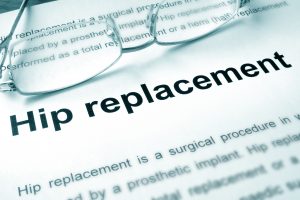I have written extensively about metal-on-metal (MoM) artificial hips. Specifically, I have covered the painful and sordid history of the Depuy ASR metal-on-metal (MoM) artificial hip. In this post I set out a timeline of important dates in the the journey of the Depuy ASR hip: from (quickly) finding its way into the market, then into thousands of patients, followed by thousands of revision surgeries, and ultimately to a massive multidistrict litigation (MDL) in federal court in Ohio involving thousands of injured people. Let’s take a look at the calendar of events of the Depuy ASR product failure.
1995

In 1995, Dr. Graham Isaac released a short paper discussing the problems with metal-on-metal (MoM) artificial hips. Dr. Isaac explained how metal wear debris created from MoM hip joints was a serious problem because of poor design and manufacturing of the metal components. Dr. Isaac also stated that even with higher quality manufacturing and engineering techniques, the performance of MoM hip implants were as “unpredictable as ever, working well for a period of time before suffering catastrophic breakdown . . . accompanied by a release of a large volume of debris.” This paper and Depuy’s other internal documents suggest that Depuy Orthopaedics most likely knew of the MoM risk factors in 1995, twenty-two years ago, and ten years before the company began selling the Depuy ASR artificial hip. In fact, one doctor noted that Depuy needed “to be cautious of the legal/litigation issues and lawyers, etc…perception of metal debris and metal-ion release.” I wrote more about what Depuy may have known about the serious risks of the ASR hip here.
 North Carolina Product Liability Lawyer Blog
North Carolina Product Liability Lawyer Blog










